21 Airlines Relocate During Massive Terminal Swap at Los Angeles Int'l
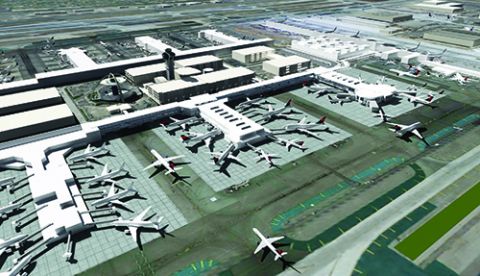
Los Angeles International (LAX) recently experienced a monumental shift that had nothing to do with seismic activity or regional fault lines. It was a self-induced shift to relocate Delta Air Lines that ultimately affected more than two dozen carriers.
After more than a year of planning, the project culminated in mid-May, with a three-night effort that rehomed 40% of the aircraft flying in and out of the world's busiest origination and destination airport. In order for Delta to move into its new facilities, the existing tenants needed to move out. This set off an extended chain-reaction that relocated 21 airlines and affected nearly 30.
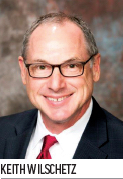
The highly orchestrated-and by all accounts successful-effort was dubbed "LAX on the Move." Keith Wilschetz, deputy executive director of airport operations and emergency management for Los Angeles World Airports (LAWA), describes the sweeping terminal swap as a "win-win for everybody."
Leading the swap was Delta, which moved from terminals 5 and 6 to terminals 2 and 3. In addition to needing more room for its growing operations, Delta also wanted to be closer to its codeshare partners and easier access to the Tom Bradley International Terminal.
On the other hand, LAX needed facility improvements, primarily in Terminal 3. So the two organizations struck a mutually beneficial deal. "Delta got the terminals they needed and agreed to put money into those terminals and make them much better than they were," Wilschetz explains.
|
facts&figures |
In total, Delta plans to invest $1.9 billion to modernize and connect terminals 2 and 3.
Rob Walker, managing director for Delta, notes that the airline's operations at LAX have more than doubled over the last five years. "It was clear that the operation Delta was running in terminals 5 and 6 wasn't as conducive as it could be in a new location," he explains. "Delta was very happy with its facility in Terminal 5; it had spent a lot of money upgrading that facility. But ultimately, it wasn't going to be operationally the best thing for us long term."
From an airfield perspective, terminals 2 and 3 had the most to offer in terms of gates and proximity to runways; but Terminal 3 needed extensive updates. "It looked like the business deal was kind of writing itself," Walker relates. "The building needed a lot of work, and you have a willing occupant here to do the work in exchange for making the move."
Strategizing the Switch
Planning for the May 2017 swap began in early 2016. Under the agreement with Delta, airlines that were relocated from terminals 2 and 3 to terminals 5 and 6 were provided "like for like" resources such as gates, offices space, color schemes, etc. "Of course, the airport did step in to right-size some of these allocations," says Viji Prasad, LAWA's terminal operations manager. "It was done collaboratively and in agreement with everyone."
LAWA's investment is estimated at $60 million.
To pull off the complicated exchange, Delta worked with each carrier to determine its specific facility needs and funded considerable construction,
Walker notes.
Previously, Delta was the only carrier operating in Terminal 5; now that terminal is home to more than 10 carriers-each with its own support spaces for pilots, flight attendants, customer service agents, baggage offices and more. "Delta needed basically one of all of those things in the building," he notes. "When you change a building that's configured for one and configure it for many, it's a very different level of space need."
According to Wilschetz, Delta invested about $300,000 to refurbish terminals 5 and 6 for their new occupants.
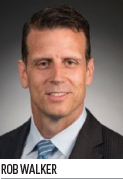 Early in the planning process, Delta determined that it needed to create an "empty chair" so crews could begin construction with minimal impact to operations. To that end, Delta moved its staff out of Terminal 5 and into a 15,000-square-foot trailer complex across the street. "That enabled us to create some room to move the first carrier, American Airlines, into T5," explains Walker. "Then, we reconfigured American's space in T6 and the dominoes were able to start falling that way."
Early in the planning process, Delta determined that it needed to create an "empty chair" so crews could begin construction with minimal impact to operations. To that end, Delta moved its staff out of Terminal 5 and into a 15,000-square-foot trailer complex across the street. "That enabled us to create some room to move the first carrier, American Airlines, into T5," explains Walker. "Then, we reconfigured American's space in T6 and the dominoes were able to start falling that way."
As space was remodeled and became available, more operations and airlines were relocated. Four American Airlines gates were moved from Terminal 6 to Terminal 5 on Jan. 31, 2017, and additional preliminary shifts continued for months.
The Big Move
When the project team slated the "big move" for May 2017, it also scheduled several evaluation points throughout the process to ensure that the transition would be successful, Prasad comments.

During the final stages of the relocation project, LAX and Delta used the airport's incident command system to synchronize stakeholders and smooth out jurisdictional responsibilities while maintaining operations. "It helped us to play as one team, managing the event like an emergency," Prasad explains. "We had the luxury of not having the stress of a real emergency behind our back, but we were able to use the same system effectively to bring the group together, stay coordinated and eliminate a lot of redundancies."
Delta contracted Chrysalis Aviation Solutions to manage the final stages of the move. Chrysalis Director Ann Thorvik summarizes the firm's responsibility as "all things transition." That included everything from packing and moving boxes to scheduling coordination and ensuring construction and IT efforts aligned so tenants could promptly operate in their new spaces.
To prepare for the move, Delta developed a comprehensive structure of move managers. Every entity involved with the move was assigned a designer who met with them to understand what their criteria would be to complete the move, explains Walker. Key subsequent steps included taking inventories of existing spaces, configuring new spaces virtually, and having Chrysalis point personnel systematically prep individual tenants and airport groups for their specific moves.

While the "big shifts" occurred on the nights of May 12, 14 and 16 with operational moves, lots of other activity happened before and after, Thorvik comments.
Prior to the big week, non-critical items were packed, labeled, loaded and relocated in careful coordination with stakeholders. "You need the desk, but you can live on folding tables for a few days," Thorvik explains. "That way, on the move night, all we're doing is picking up your computer and putting it on your already-relocated desk."
Countless meetings with all stakeholders ensured communication was strong, everyone was in synch and that nothing was being missed, she comments.
"There's no substitute for communication," Walker stresses. "The inventories and meetings and accomplishment checklists were reviewed with every carrier multiple times and iterated until the move took place."
Posting staff at the new and old locations as items were moved helped ensure that each piece of the puzzle was where it should be to accommodate the upcoming overnight shift. "You don't have time to go back to be an interior decorator," says Thorvik. "That plan has to be in place at that point and you're just executing a plan."
To guide movers, Chrysalis hung drawings on each door indicating how the room should look when complete.
"The big secret in all of this is that when you really get close to your customer, and understand what their needs are, the 80/20 rule comes into play," Walker states. "On the night of the big move, you only need to move about 20 percent, and the other 80 percent can be pre-staged or pre-moved."
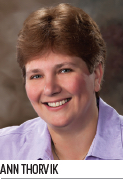
Chrysalis hired professional movers to supplement teams from the airlines, airport and tenants. "They have the equipment and the bodies you need to execute a lot of activity in a short period of time," relates Thorvik.
Throughout the event, the transition consultant "rolled up its sleeves" to help keep everyone on task. "The objective is to not incur flight delays, and safely get people on and off planes on that first operational day," Thorvik summarizes. "And that was achieved."
Parallel IT Systems
Information technology systems played a critical role in the success of the terminal swap, Walker says. "People in the airline industry are incredibly resourceful-almost every day they are dealing with an unanticipated event somewhere in their network; so they are very adept at making do," he explains. "But the way the industry is configured today, you need your IT systems. You can't function without those."
The move involved two separate networks. The proprietary system Delta had used to process passengers in terminals 5 and 6 was replicated for use in terminals 2 and 3; and a new common-use platform from Amadeus Airport IT Americas was deployed for the carriers moving into terminals 5 and 6.
The Amadeus system allows airlines to "coexist, cooperate and use each other's check-in counters and gates without having to use different systems," explains Betros Wakim, president of Amadeus Airport IT Americas. "We provide a playground where everybody can play on their own favorite toys and be happy about it."
Two technology labs, one in Terminal 6 and another in the temporary trailer complex, allowed carriers to acclimate to the new system before it was installed. Each carrier and its IT team was able to set up their "image" and make sure the common-use platform connected appropriately with the airline's proprietary system at company headquarters. The IT labs also allowed airlines to train and test employees so they were fully prepared to operate on the new system in their new locations.
Leading up to the week of the big moves, Delta removed all of its proprietary equipment from terminals 5 and 6, replaced it with the new Amadeus system, and operated off the common-use platform until the final move. "We just couldn't do all of that work the nights of," Walker notes.
"Our technology facilitated a seamless transition overnight-which was key in this project," adds Wakim.
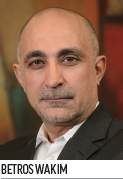
The common-use aspect of the Amadeus system helped the airport and airlines continually update signage and branding throughout the move. As carriers moved and operations shifted, digital displays guided passengers with appropriate messaging and airline branding. "None of the airlines lost any branding ability," Wakim notes. "We provide their resource planning, so they can plan all their gates, flight information displays, logos and display flight schedules." Amadeus implemented 150 Samsung flight and gate information displays throughout the project.
Overall, IT changes involved about 3,000 new devices and required about 475 miles of copper cable and 26 miles of fiber.
On the Tarmac
The overnight moves were not just about shifting ticketing operations and offices. Crews also had to relocate airplanes and associated airside support equipment-a process that required close coordination with the FAA, TSA and Air Traffic
| Related Tasks The terminal swap required more than just moving furniture and boxes. Associated tasks included: |
Control Tower officials. Only eight aircraft were towed to their new terminal locations; most simply taxied to the new terminals after landing.
The apron work that was needed to accommodate the swap was almost as complex as the IT installations, Walker relates. Because Delta's aircraft fleet differs from other carriers', all the apron striping at terminals 5 and 6 had to be completed and test-fit prior to the move. Each type of aircraft had to be towed up to a gate to ensure that it worked properly with the jet bridge.
Testing for A321s proved particularly challenging, because Delta does not fly that type of aircraft into LAX, and the carriers that do could not spare one for testing. To ensure that the airside swap went smoothly, Delta ferried in an A321 just for testing. "It was a huge, monumental effort," notes Walker.
Talk About a Challenge
Because the terminal shift involved so many stakeholders, communication was a critical component. Frequent stakeholder meetings were held to keep everyone informed and on task throughout the planning process and during the week of the big move, says Wilschetz.
Communicating with the traveling public was equally important, he adds. "All the hard work that we did for months would be worthless if the public didn't cooperate," he explains.
Walker describes the process to develop and execute the public information strategy as coordinated and systematic. "We met monthly and then biweekly, and then weekly starting from last winter all the way up to the move," he shares.
Delta leveraged its website and mobile application to communicate with passengers about the terminal changes. "We shared some of that information with LAWA to let them know what our plan was for that communication engagement, and that was mirrored in some regards by the airport and even some of the other carriers," relates Walker.
Prasad describes Delta's strategy as a well-defined stream of communication that hit every platform: social media, print and electronic media. "We were consistent in staying lock-step with Delta's efforts to maintain the communication plan and customer support/experience enhancement plan," she adds.
Shortly after the move dates were locked down, communications and advertising were kicked into high gear. "We went about letting everyone who would listen to us know that this was going to be coming down the pike," shares Wilschetz.
The campaign was designed to be focused and incremental. "It was determined that we didn't want to provide too much information too early," he explains. "That would just confuse and scare people... and [the terminal changes] may not even affect their travel."
Roughly 90 days out, notices were infrequent and had a general "heads-up" tone. As the big move got closer, however, they increased to what Walker calls an all-out blitz, with more urgent messaging at the airport, on the radio, etc. Coordinating with shuttle bus drivers, public transportation outlets, and other services that operate at the airport was also key, he adds.
Having everyone at the table acting as a team proved invaluable, Wilschetz reflects. From the airlines and concessionaires to Uber, Lyft and hotel shuttle drivers, "it was one massive team effort that went beyond just this airport and our tenants. It really extended to the region."
All Hands on Deck
Wilschetz continually emphasized that the terminal swap was all about the passenger. "That's why we did this, and we couldn't lose sight of that during that period," he explains. "We had to make sure that the passengers' needs were taken care of."
Toward that end, the airport had support staff on hand to transport passengers who arrived at the wrong terminal. According to Prasad, about 8,000 passengers needed a lift during the big moves and the following week. "Considering that we support 200,000-plus on a daily basis, that was really a drop in the bucket," she reflects.
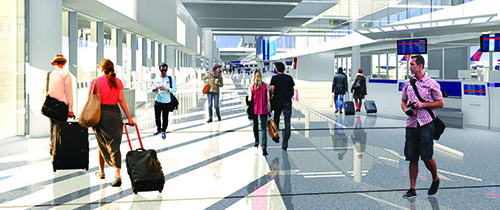
Inside the terminals, extra employees and volunteers were on hand to assist passengers. LAX's Guest Experience Members, Volunteer Information Professionals and Pets Unstressing Passengers were out in full force; and Delta brought in members of its Atlanta-based Peach Corps.
LAWA also did "little things" like distributing free water bottles to passengers during the changeover period. "They went a long way to mitigate any stressful situations passengers may have encountered," says Prasad.
Outside, crews updated roadway signage each night-a task that required careful choreography and roadway closures. "We touched 1,000 signs, either created new or revised them, to make sure people knew what was going on," Wilschetz notes.
Third Time's a Charm
The three overnight moves were very different in scope and the effort they required to be successful, Walker relates. The team scheduled the harder moves for the first and third nights, so it could apply lessons learned during the first night to the second night, in hopes of making the third night-the most challenging of all-go smoothly.
"That is indeed what happened," Walker reports.
One of the lessons learned was about coordination. Despite having a diverse group of personnel on standby (everyone from IT specialists to painters), it was initially difficult for frontline staff to get the help they needed. To remedy that, the team created text groups to share information on the status of the moves and connect response teams in the field with additional resources. "Then everybody had common situational awareness, and we were able to react almost immediately," Walker explains.
With the complicated move behind them, Delta and the other airlines have all settled into their new terminals. "Our business partners and the LAWA team were phenomenal," Walker reflects. "It wasn't always a lovefest, to be honest. We fought through a lot of issues together, and it was very stressful planning something that had never been attempted before."
That said, the "win/win" LAWA officials were anticipating is firmly in place.
| Get a Move On The sweeping terminal swap that occurred at Los Angeles International this spring required about 170 professional movers and 50 helpers per night. Crews used 53-foot semis and 26-foot box trucks to haul equipment and roughly 9,200 boxes and crates. Key items they moved include: • ticket/gate counter millwork & equipment • stanchions for ticket & gate queues • IT equipment • 900 computers • ramp/ground service equipment (tugs, carts, fire extinguishers, etc.) • safety devices (cones, barricades, etc.) • bag sizers • boarding equipment • break rooms (lockers, time clocks, microwaves, chairs, water coolers, water jugs, vending, tables, refrigerators, etc.) • office furniture, filing cabinets, safes, artwork, whiteboards, bulletin boards • pilot & flight crew lounges (sofas, recliners, desks, computers, chairs, tables, files, shelving units, crew uniforms) • storage areas (paper & cleaning supplies, aircraft provisioning supplies, blankets, pillows, in-flight magazines, safety information cards, archived files, printer stock, seasonal decorations) • tool rooms & parts stores (toolboxes & tool bags, specialty tools, shelving units, aircraft parts & maintenance supplies, replacement seat upholstery, seatbelts, etc.) |
2022 Charlotte Douglas International Airport Report of Achievement
 Giving back to the community is central to what Charlotte Douglas International Airport and its operator, the City of Charlotte Aviation Department, is about, and last year was no different.
Giving back to the community is central to what Charlotte Douglas International Airport and its operator, the City of Charlotte Aviation Department, is about, and last year was no different.
Throughout 2022, while recovering from the COVID-19 pandemic, we continued our efforts to have a positive impact on the Charlotte community. Of particular note, we spent the year sharing stories of how Connections Don't Just Happen at the Terminal - from creating homeownership and employment opportunities to supporting economic growth through small-business development and offering outreach programs to help residents understand the Airport better.
This whitepaper highlights the construction projects, initiatives, programs and events that validate Charlotte Douglas as a premier airport.
Download the whitepaper: 2022 Charlotte Douglas International Airport Report of Achievement.








